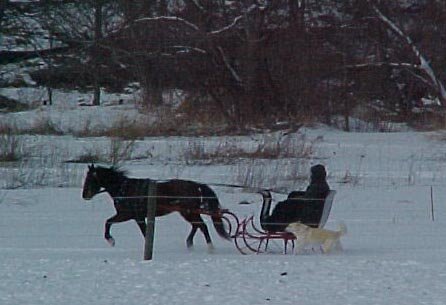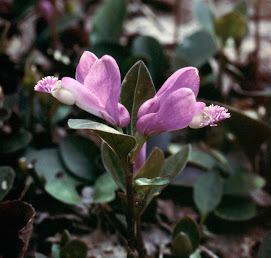January 20, 2008
I was trying to feel my way around for a better idea. I was thinking of writing a nature-orientated column that I would send out every couple of weeks to interested parties. This is the first one. I have been an amateur naturalist and photographer for nearly 60 years I have been writing several stories about my memories and these will be available for those interested
I think it would be a good thing to go back a month to the Christmas bird count I think it would give us a better perspective on birds in general. The first Christmas count a few people got together forming sort of a club. There were only 27 individuals and they picked one area to count in. The only thing it accomplished was to start the idea. That year was 1900. The counting of birds and keeping records became a countrywide thing the 2003 count was broken up into 1,000s of sections taken in most of the country the count took about 2 weeks December 14 through January 5th. On this count 56,000 observers counted
73 million birds. .
I took part on several Christmas counts 1970 1973 & 1974
One of them was at Sapsucker Woods (Cornell Ithaca) it was kind of interesting but I didn’t see anything unusual. I had a total of 16 species. Some other observers got as many as 34 types they identified. Although some of those 34were discredited later. I think some observers feel they will not get recognition if they don’t come up with something unusual they credited me with all 16. Depending on the area you were assigned some areas identified as many as 65 confirmed.
According to the Fish and Wild Life Service in 2002 there were 62.9 million bird watchers in the U.S, and bird watching had the biggest following of all wild life watching activities
And bird-watching had the biggest following of all wildlife-watching activities…It was amazing to me that we spent over 32 Billion dollars in 2001 on our feathered friends. If we considered special optics, canoes, tents rents of cabins and other travel expense such as food & gas that would be about 85 Billion. And that’s not counting supporting 863,000 jobs. Gee with all that money we could support at least 2 more wars. Or maybe buy a country like Brazil. But I believe the bird’s care they really don’t ask for it and they do not try to take over our space. However we seem to be taking over there space at a ..madding pace. Wherever we are they are there beauty and the way they fascinate us with some of the things they do makes studying them well worthwhile. God left them for us to take care of and enjoy. In the past we kind of made a mess of their lives,
Before 1900 the birds were on there own and it sometimes hard to imagine there was enough left for us to enjoy. Before 1800 birds in North America were not given much thought. The only time they were mentioned was how many there were and as food source. Ofcourse the birds were very important to the Indians, the white man did not see any importance to them until the 1940s.
Most history of Ornithology begins in the early 19th century Alexander Wilson and Audubon among the first to get the interest In birds There study and exploring and of course paintings started a real interest in birds there paintings along with others realy brought birds to the forefront. There will always be those that were skeptical of how Audubon painted his famous birds pictures shoot them how else, he was ridiculed then and still is today. The quantity of birds he shot personally or had others kill them for him was defiantly negligible. How could anyone imagine getting the true colors and the right details of hundreds of birds? You have to realize there were no binoculars field glasses or any other equipment to get that close to get an accurate life like painting. Some of Audubon’s early paintings were not of the same quality and were never published some of them were from guessing or without the right props.
There were several other bird and nature painters at the time just about all of them also shot birds if there was no other way. Usually they had shooters that would bring back whole birds or skins for the painters to work with. Of course most other naturalists or real birders with a interest in identifying new birds or birds they were not sure of also (up to 1900 at least were called Shot gun Ornithologists. That was the method used for at least 150 years. These collectors would not make much of a dent in the bird population. However some egg collectors eventually had an effect on some of the larger birds such as condors. The bird population in America will never be known. But most science and Ornithologist believe we only have 15 to 20% of our birds left. And many will not recover. The top ornithology naturalist “Wilson” took the first calculations on a regional bird population He estimated that 100 million birds entered (Pennsylvania) each spring. Figuring 400 nests per square mile Scientists now consider those figures grossly low. It was likely there were twice that count especially in the early 1800s.
Every one knows that the Passenger pigeons had some of the largest flocks of birds in North America. Wilson also used some a shewed back of the envelope figuring to estimate the size of a Passenger pigeon flock he witnessed in Kentucky, the flock was a mile wide and passed for 4 hours at a rate of a mile a minute he said assuming each square yard of space held 3 pigeons that would give two thousand two hundred thirty millions two hundred and seventy two Pigeons A similar flock seen by Audubon over the banks of the Ohio in 1813 that darkened the sky. His estimate was one Billion one hundred 15 million 36 thousand. That was
1,115,136,000. There are many others that witnessed the. Flocks at the time, The birds were shot, trapped, stupefied by smoke under there roosts, netted, stoned, clubbed some were used for food most ended up as fertilizer. Probably the sadist day in the bird world as well as ours….the last passenger pigeon a captive in a Cincinnati zoo in 1914 and there were a few there that it brought tears to there eyes knowing only then that extinction is forever.
Habitat loss and the demise of all the forests\ was more than they
Could cope with. JUST TRY TO IMAGINE WALKING OUT
YOUR FRONT DOOR AND SEEING A FLOCK OF SAY CROWS ABOUT A MILE WIDE MAYBE 25 FT DEEP AND 50
MILES LONG WOULD THAT MAKE YOUR HAIR STAND UP. To witness such a thing
P.S. Just a idea to see if this sparks an interest I have written other stories on my own experiences with birding and what you
Might call hunting How can you be a hunter without shooting any thing ,,,that’s easy. .
Bill Reeves
PPS: I hope I got all the spell, grammar and other checks taken care of. However the story is the most important part. Lynn
Along the Susquehanna

View from our front window
Sunday, January 27, 2008
Subscribe to:
Post Comments (Atom)








No comments:
Post a Comment